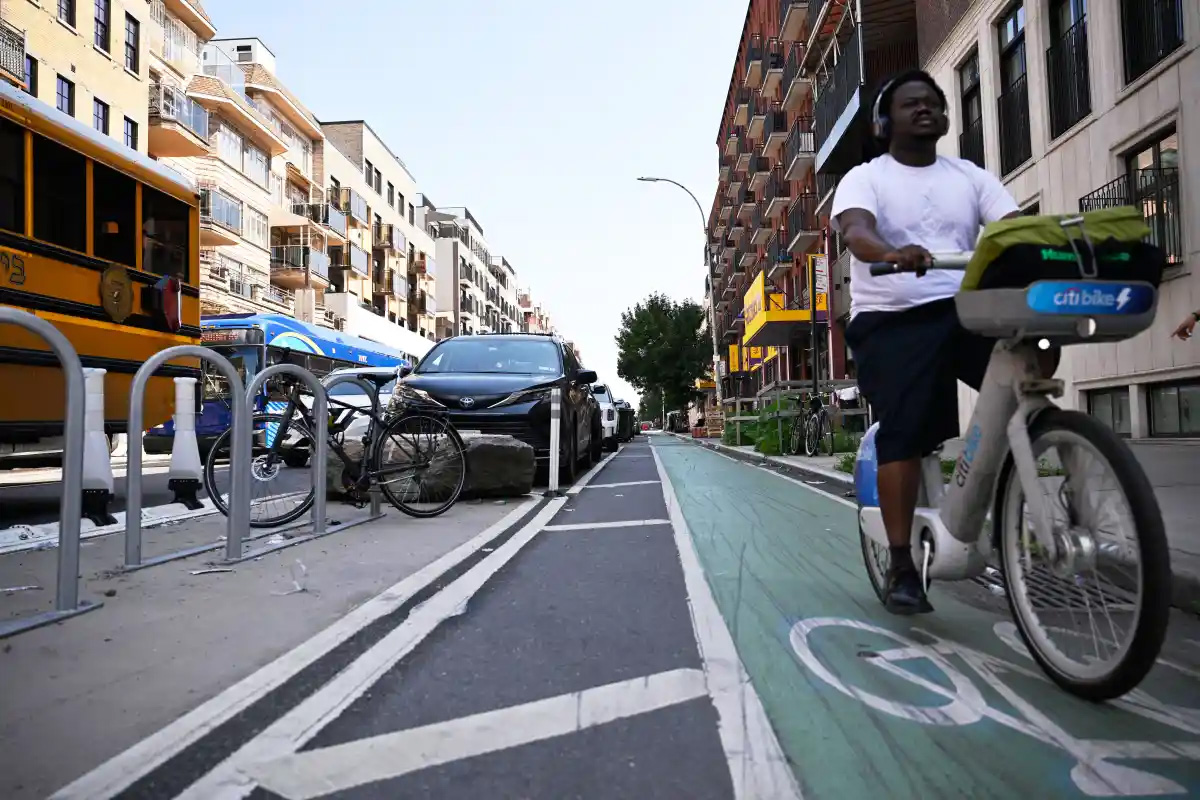A Nice Pair in Richmond Hill
Braving the ungodly 80-degree heat (I’m kidding), nearly fifty Forgotten New York fans converged on Richmond Hill for the eightieth Forgotten New York tour in a series that goes back to June 1999. New York City, at one time or another, has had three settlements named Richmond Hill. The one in Manhattan, in what is now…


Braving the ungodly 80-degree heat (I’m kidding), nearly fifty Forgotten New York fans converged on Richmond Hill for the eightieth Forgotten New York tour in a series that goes back to June 1999. New York City, at one time or another, has had three settlements named Richmond Hill. The one in Manhattan, in what is now the West Village, and the one in Staten Island, in what is now Richmondtown, have been pretty much absorbed into new neighborhoods. Queens’ Richmond Hill has been more enduring. In 1869, developers Albon Platt Man and Edward Richmond laid out a new community just west of Jamaica with a post office and railroad station, and Richmond named the area for himself (or, perhaps, a London suburb, Richmond-On-Thames, a favorite royal stomping ground). It became a self-contained community of Queen Anne architecture west of Van Wyck Boulevard (now Expressway) that remains fairly intact to the present day. Journalist/activist Jacob Riis as well as the Marx Brothers were Richmond Hill residents in the early 20th Century.
The early 20th Century William Demuth — S.M. Frank factory (above) is near the corner of Park Lane South and 101st Street. Here briar was turned and polished to manufacture Frank Medico smoking pipes. It was built at “a time when every man could afford a pipe, and conversations centered on which shape burned coolest to the taste.” The intricate brickwork is embellished with stepped corbels under the cornice and basketweave on the center tower. It was converted to condos in the 1990s. The adjacent Rockaway LIRR may have had a siding where goods could be loaded right from the factory. Simple, relatively unembellished brick factory buildings have always been a personal favorite.
Read about PS 66 after the jump.

Another Richmond Hill favorite, near the undefended border with Woodhaven, is PS 66 on 102nd street and 85th Road. Surprisingly, it’s the only building in the neighborhood afforded Landmarks Preservation Commission protection. It was designed by the Superintendent of Schools Harry S. Chambers and completed in 1899, one year into Queens’ great amalgamation into Greater New York City. The eclectic Queen Anne style was all the rage around that time and PS 66 followed the trend with multiple dormers and sharply pitched roofs. A six-story bell tower is the centerpiece. A 1906 addition was helmed by prolific schools architect C.B. J. Snyder. In 2004, PS 66 was subtitled the Jacqueline Kennedy Onassis School in honor of the first lady’s passion for literacy and historic preservation.
Kevin Walsh is the webmaster of Forgotten NY and the author of Forgotten New York and, with the Greater Astoria Historical Society, Forgotten Queens.





What's Your Take? Leave a Comment